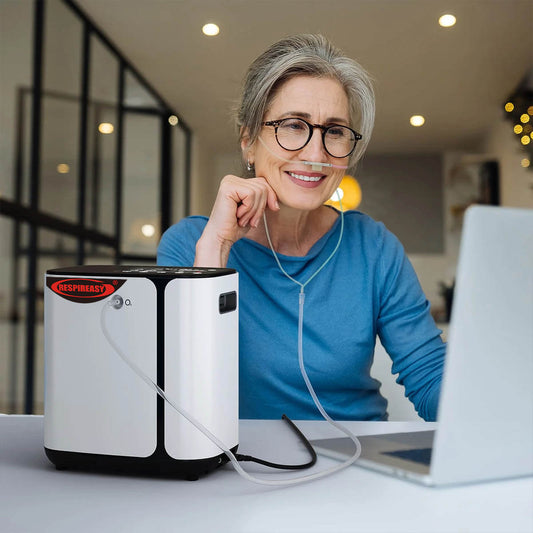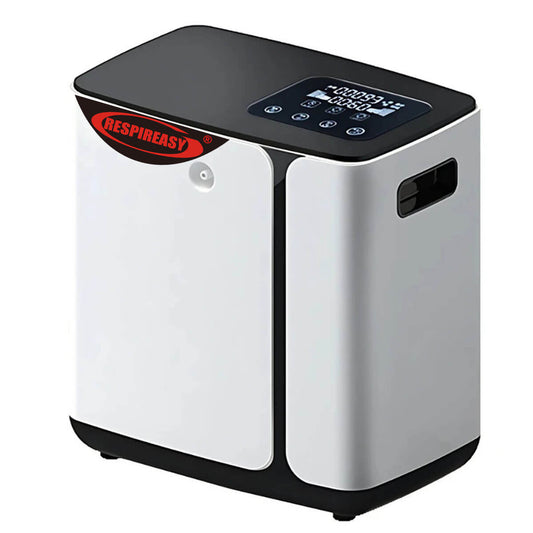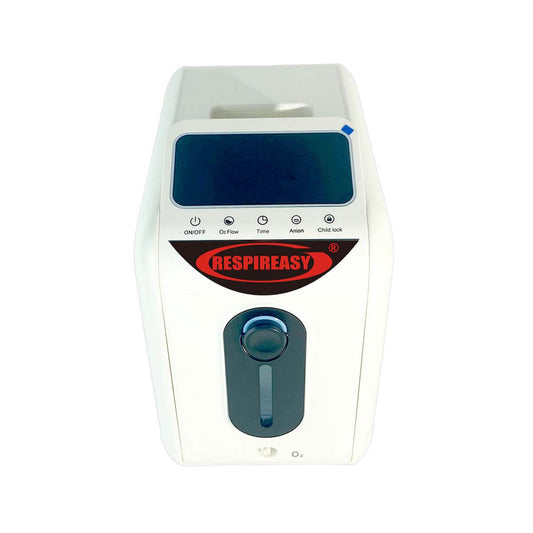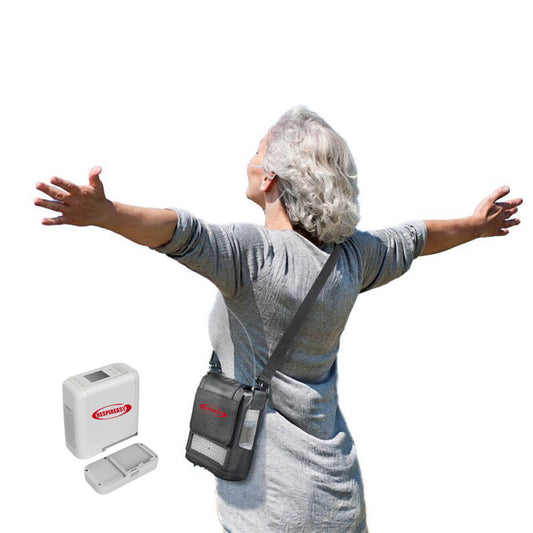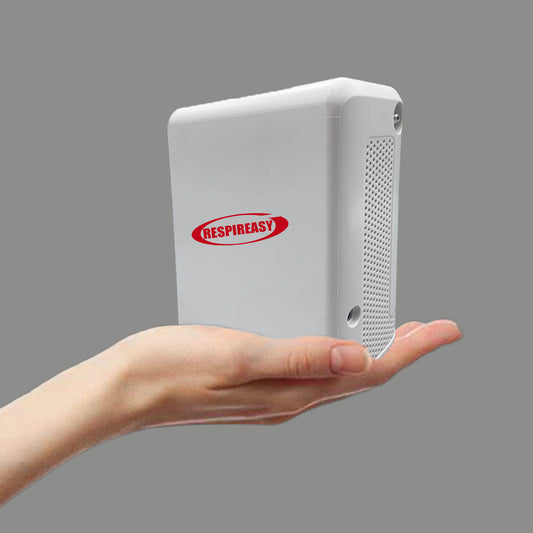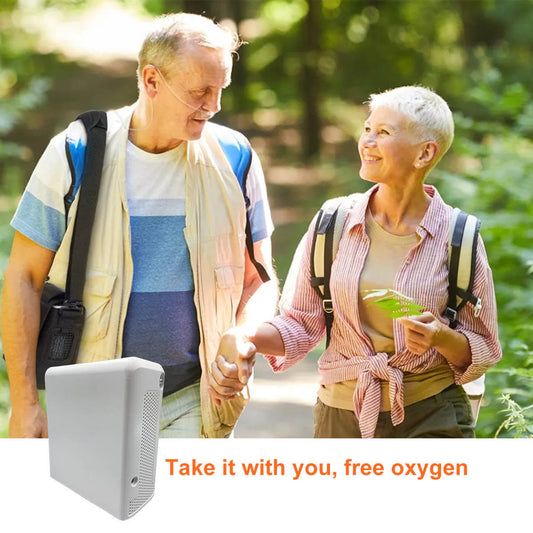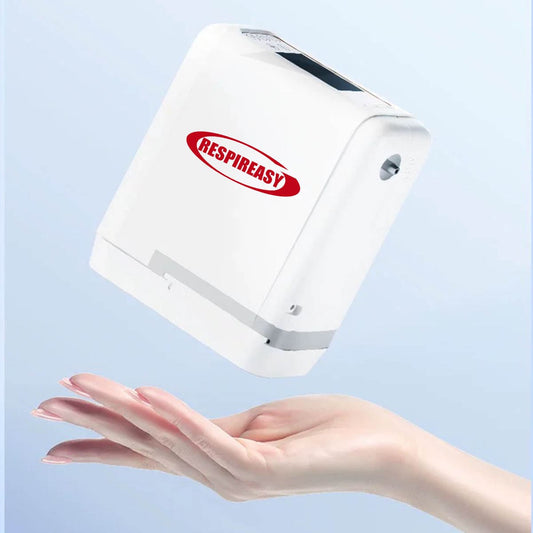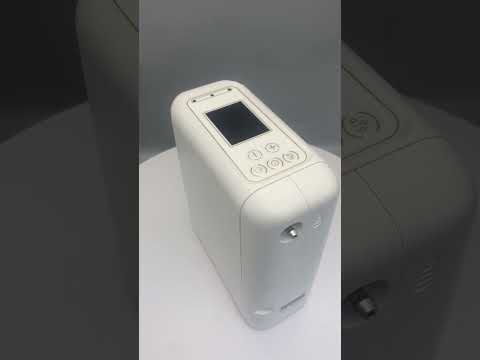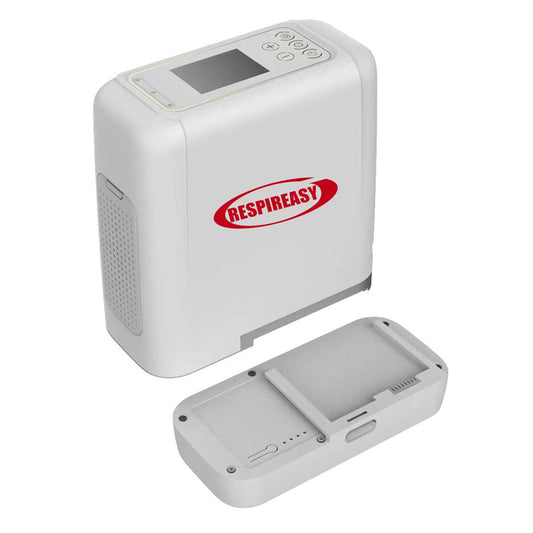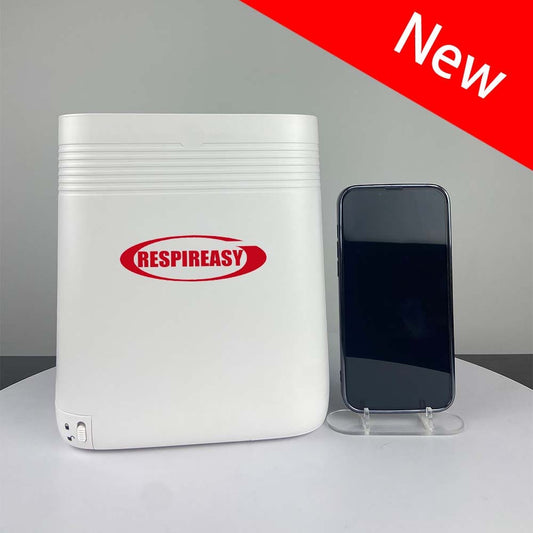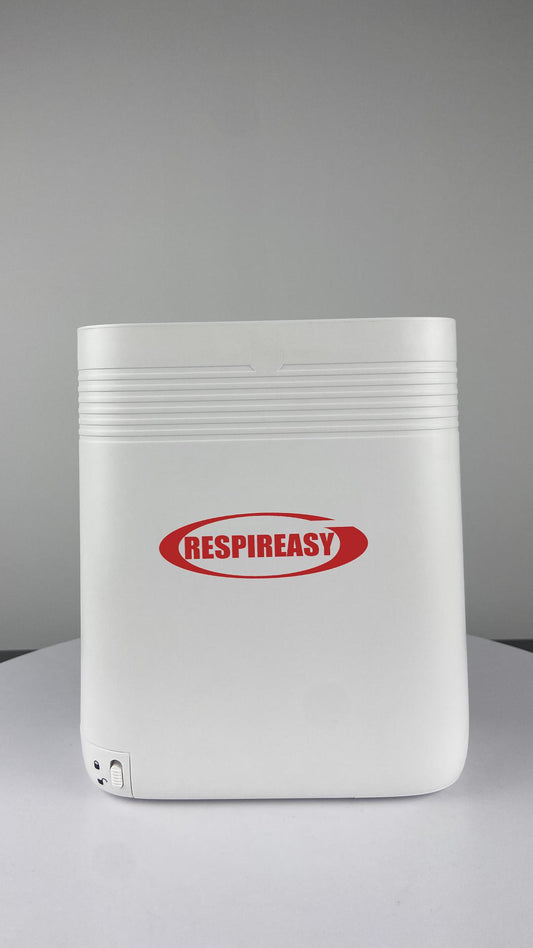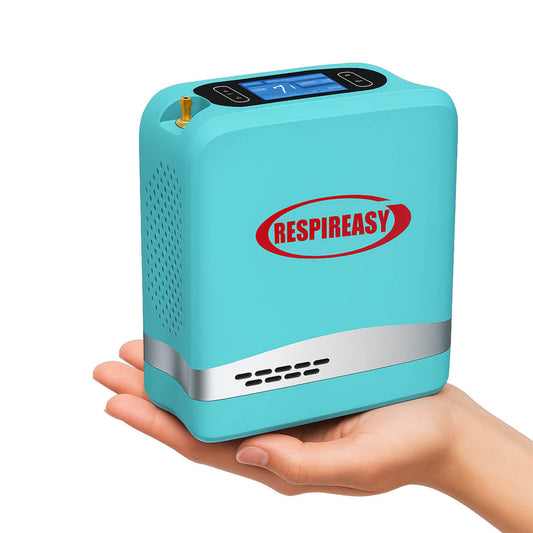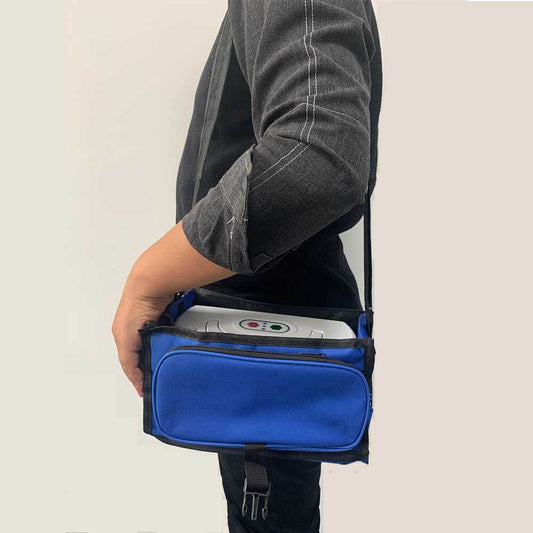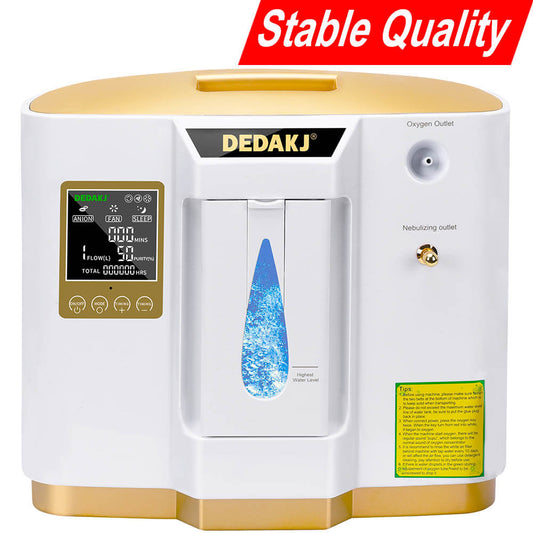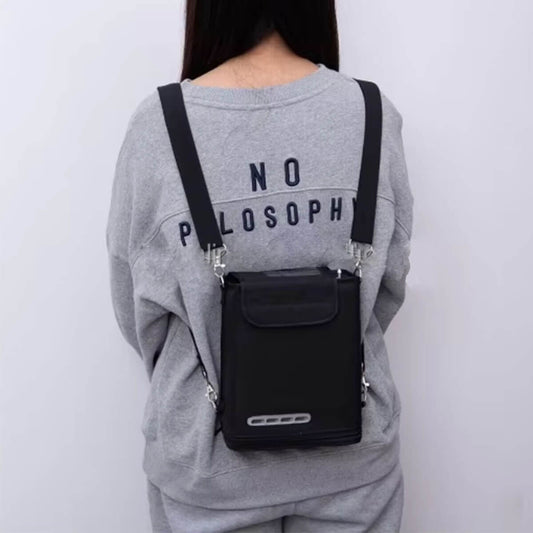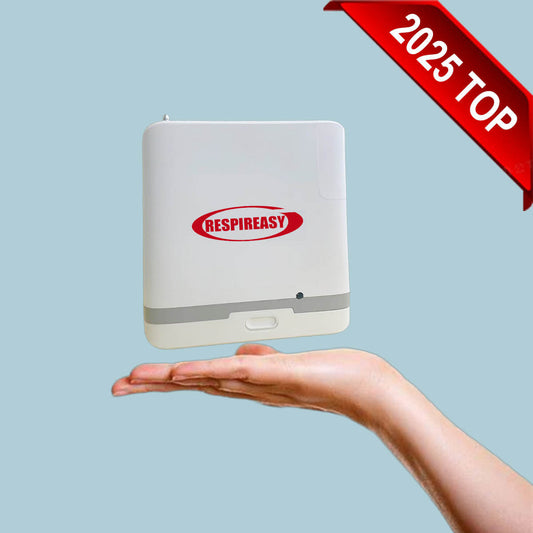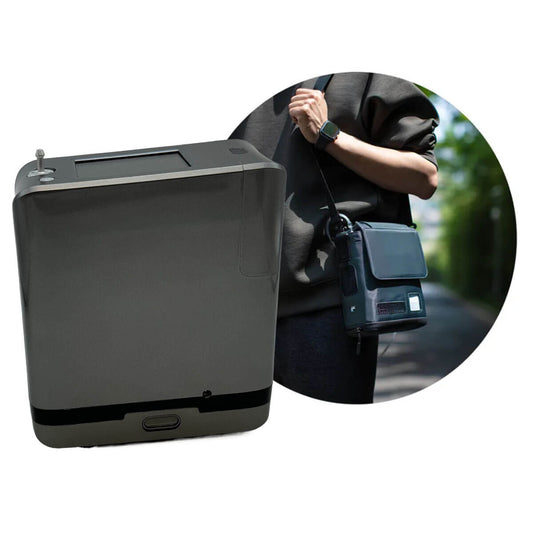Principle of Oxygen Generator and Model Selection of Oxygen Generator
Generator Principle and Model Selection of Oxygen Generator
Oxygen concentrator is a relatively common oxygen therapy equipment in our life. The oxygen concentrator absorbs indoor air, removes nitrogen from it, and provides up to 95% pure oxygen. Some conditions that may cause a patient to experience low oxygen levels include recovery from surgery, COPD, sleep apnea, and anemia. An easy way to increase the oxygen levels in your blood is with a portable oxygen machine or oxygen concentrator.
The composition of air (78% nitrogen, 21% oxygen and 1% other gases like carbon dioxide, argon, etc.) clearly shows that air is mainly composed of two gases: nitrogen and oxygen (together 99%). If nitrogen is removed from air, the main gas remaining will be oxygen, which is about 90-95% pure. Oxygen concentrators use this idea with the fundamentals of pressure swing adsorption (PSA) to deliver 90-95% pure oxygen.

Oxygen generator system variables:

Filter series: filter out impurities present in the air
Air Compressor: Pushes room air into the machine, where it is forwarded to the molecular sieve bed.
2 Molecular Sieve Beds – Zeolites (microporous aluminosilicate minerals): have the ability to trap nitrogen.
Switching valve: switches the output of the compressor between the 2 molecular sieve beds
Oxygen Outlet: The opening that releases oxygen to the patient
Flow meter: set flow in liters per minute (LPM)
How does an oxygen concentrator work?

- Ambient air (indoor air) (English: Ambient Air) passing through a series of filters is sucked into the machine by the compressor.
- The air is compressed (COMPRESSOR) into the first molecular sieve bed, all the nitrogen is adsorbed. Molecular sieve beds (sieve beds) are porous and therefore have a large surface area as they absorb large amounts of nitrogen.
- Now because only nitrogen and oxygen are the main components in the air, the main gas remaining is oxygen. Concentrations of up to 95% of this oxygen can be provided to patients through oxygen delivery systems such as nasal cannulae, oxygen masks, etc.
- The compressor keeps compressing the ambient air until it gets saturated (filled) with nitrogen and compresses the air to the first molecular sieve bed. Molecular sieve beds are typically saturated at a pressure of 20 psi.
- 5. Before the first molecular sieve bed is saturated, the switching valve works, and the output of the air compressor is immediately switched to the second sieve bed, that is, the compressor starts to compress air to the second molecular sieve.
- When the molecular sieve bed is saturated with nitrogen, the nitrogen in the first sieve bed is vented. The small amount of nitrogen remaining in the molecular sieve bed after venting can be removed by backflushing the oxygen in the other molecular sieve bed.
- Once the second sieve bed is saturated, the switching valve switches the output of the air compressor back to the first sieve bed again.

- This process is repeated continuously to ensure a continuous flow of oxygen.
- This process of switching sieve beds is called pressure swing adsorption (PSA).
- Then use the flow meter to control the output of oxygen, in the flow meter, the flow can be set manually in liters per minute (LPM).
- Oxygen exits through an outlet where an oxygen delivery system such as a nasal cannula or face mask is attached, usually through a humidifier.

Through the principle, everyone should understand that the oxygen generator is finally transported to oxygen through pressure swing adsorption, and the oxygen output is controlled by a flow meter. In the flow meter, the flow rate can be manually set in liters per minute (LPM). Let's first look at what the so-called liters mean. The flow rate of the oxygen generator indicates the amount of oxygen per minute of the oxygen generator, 3 liters is 3 liters/minute, and 5 liters is 5 liters/minute. In fact, the flow rate is also a criterion for choosing an oxygen generator.
Here is an oxygen standard for an oxygen generator:
For a 5-liter oxygen generator, when the oxygen flow rate is 1-5 liters, the "oxygen concentration" reaches 90%-96%, that is, the 5-liter oxygen generator not only includes: the oxygen flow rate per minute is 1 liter, At 2 liters and 3 liters, its oxygen output concentration is 90%~96%; at the same time, when 4 liters per minute and 5 liters per minute are selected, it can provide oxygen therapy with an oxygen concentration of 90%~96%. oxygen.
Since the 3-liter oxygen generator and the 5-liter oxygen generator provide different ranges of medical oxygen flow, when you use the most common nasal oxygen tube (also known as: nasal catheter, nasal suction tube) for oxygen inhalation When , the inhaled oxygen concentration FiO2 is different due to the oxygen inhalation flow rate.
"Standard nasal oxygen tube" is a low-flow oxygen inhalation device, which is often used for oxygen therapy not exceeding 6 liters per minute. It belongs to open oxygen inhalation. The actual oxygen concentration reaching the lungs is: after the oxygen in the oxygen generator is mixed with air oxygen concentration.
Oxygen Concentrator Applicable People:

The 1-liter and 2-liter oxygen generators are mostly used for health-care oxygen inhalation for people with slight hypoxia, such as pregnant women and white-collar workers with slight hypoxia.
The 3-liter oxygen generator is mostly used for people with mild to moderate respiratory diseases, cardiovascular and cerebrovascular diseases, and three high-level people.
The 5-liter oxygen generator is mostly used for: patients with severe diseases, people who need to use a ventilator, people who need to inhale oxygen for a long time every day: people with chronic obstructive pulmonary disease, pulmonary fibrosis, lung resection, lung cancer, pneumoconiosis, silicosis, etc.
CLICK THE LINK BELOW TO CHECK 1-10 liter OXYGEN CONCENTRATOR DEDAKJ CONTINUOUS FLOW MODELS
Home &Medical Use Oxygen Concentrator




The 3-liter machine and the 5-liter machine have different compatibility with "household non-invasive ventilator"
Non-invasive ventilators for home use are different from non-invasive ventilators for hospitals. The oxygen source often needs to be provided by an additional oxygen generator, because the mask has a "storage effect" of carbon dioxide, and the pressure inside the mask is relatively high, generally less than 5 liters/ When the oxygen flow rate is less than 10 minutes, the oxygen cannot enter the mask well, and naturally it cannot enter the airway and lungs, and at the same time, the exhaled carbon dioxide cannot be flushed out of the mask.
In addition, due to the large air flow in the mask, the incoming oxygen will be severely diluted. Therefore, if the low-flow oxygen output of a 3-liter oxygen generator is connected to a home non-invasive ventilator, it often cannot meet the patient's oxygen demand and affect the patient's therapeutic effect.
Therefore, when patients need to connect a home non-invasive ventilator with an oxygen generator, doctors often suggest that they need at least a 5-liter home oxygen generator, or an oxygen generator with a larger flow rate, which is more appropriate.
The above principle introduces the working principle of an oxygen generator. A 5-liter oxygen generator uses more molecular sieves than a 3-liter oxygen generator. At the same time, its power components are also the main cost. The air compressor in the oxygen machine can handle more workloads. It is more suitable for people who need long-term oxygen therapy every day. For example, people with COPD should use a 5-liter oxygen concentrator rather than a 3-liter oxygen concentrator.
In terms of oxygen inhalation flow, people with chronic obstructive pulmonary disease should adopt low flow: 1.5~2.5 liters of oxygen per minute for oxygen therapy, which will make some people think that only 3 liters of oxygen generator is enough. In terms of time, for people with chronic obstructive pulmonary disease, the daily oxygen therapy time is relatively long, and they are often advised that the daily oxygen therapy time should not be less than 15 hours, preferably 24 hours if allowed. Oxygen inhalation for hours.
The 3-liter oxygen generator only runs 1.5~2.5 liters per minute. The air compressor on the 3-liter machine has already carried a certain workload, and then works for 15 hours or 24 hours for a long time, which makes the life of the compressor A sharp drop may easily lead to machine failure.
5-liter oxygen generator, many companies have designed the 5-liter oxygen generator as a 24-hour operation mechanism. The displacement of the compressor is larger and the performance is stronger. When choosing 1.5-2.5 liters, because the 5-liter compressor It has a larger displacement and more margin. Although the displacement of the 5-liter compressor has been attenuated during the long-term operation, it can still meet the minimum requirements of the system, and the overall life is longer. This mode of oxygen inhalation for the COPD crowd is more secure and appropriate. This is an important reason why many professional doctors recommend them to use a 5-liter oxygen generator.
In particular, for users who turn on for 15 hours and 24 hours, they often inhale oxygen during night rest. Among the 5-liter oxygen generators, there are many high-end silent and high-quality oxygen generators. Choose to better meet their oxygen needs.

DEDAKJ Oxygen Concentrator
Established in 1953, with ISO, CE, RoHS and PSE certifications, with medical oxygen concentrators and home oxygen breathing machines as the core, DEDAKJ is the top-rated oxygen concentrator supplier,offers the mini &small oxygen concentrator, household portable oxygen making machine, the medical grade 10 liter oxygen concentrator for hospital oxygen therapy &clinics oxigenoterapia. More The DEDAKJ Oxygen Concentrator store website offers the DEDAKJ original oxygen accessory oxygen parts & components. All DEDAKJ oxygen machine oxygen concentrators concentrador de oxigeno and original oxygen accessories parts can be bought here.
Buy online the best quality portable oxygen concentrator in DEDAKJ oxygen concentrator store.
Official Store: https://dedakjoxygenconcentrators.com/





























